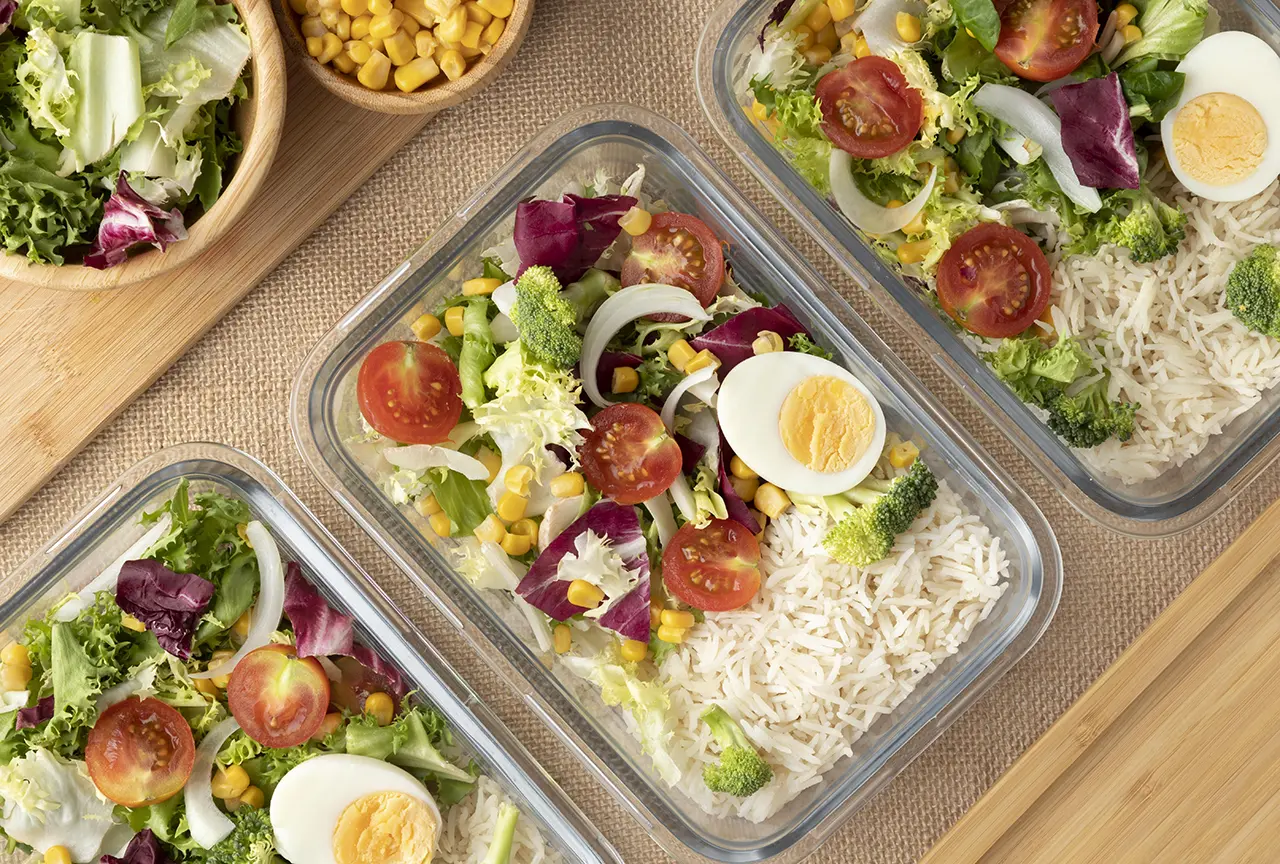Meal Prep Tips for GLP-1 Users: What Works When You’re Not Hungry
If you’re using a GLP-1 medication like Ozempic, Wegovy, or another form of semaglutide, you’ve probably noticed a major shift in your hunger cues. These medications are known to significantly decrease appetite and increase feelings of fullness after eating. While that might sound ideal for weight loss, it can make meal planning and meeting your nutritional needs more challenging.
Let’s talk about how to prep meals effectively when your appetite seems to be missing in action!
Understanding GLP-1 Appetite Changes
One of the primary mechanisms of GLP-1 receptor agonists is their impact on the brain’s appetite regulation centers. That’s why GLP-1 appetite changes are leaving people feeling full after just a few bites or forgetting to eat altogether.
While that can help with weight loss, it can also lead to unintended under-eating, nutrient deficiencies, or a strained relationship with food. If you’re dealing with appetite loss on a GLP-1, here’s how to plan meals in a way that supports your body, even if your brain isn’t interested in food.
Focus on Nutrient Density, Not Volume
When you’re eating less overall, every bite counts. Prioritize foods that are packed with nutrients, even in small portions. The goal is to choose foods that will maximize your nutrition:
- Lean proteins (chicken, eggs, tofu, Greek yogurt)
- Healthy fats (avocado, nuts, seeds, olives)
- High-fiber carbs (quinoa, beans, sweet potatoes)
- Vegetables with color and crunch (bell peppers, spinach, broccoli)
The goal is to maximize nourishment without needing a large portion size.
Create “Snack-Sized” Meals
If the idea of three full meals sounds overwhelming, break your day into smaller eating occasions. Try prepping mini meals like:
- Hard-boiled eggs with cucumber slices
- Half a wrap with tuna and avocado
- A small protein smoothie with fruit and spinach
- A few bites of salmon with roasted veggies
These mini meals can help you manage eating enough on semaglutide without triggering nausea or bloating.
Meal Prep in Batches, But Portion Lightly
Keep in mind, you don’t need giant containers of food. Instead, portion out smaller amounts, aim for 1/2 cup servings instead of 2-cup portions. Use small containers or bento-style boxes to make the idea of eating feel less intimidating.
Batch cooking basics like grilled chicken, roasted vegetables, or whole grains can still be helpful, just keep the servings modest to avoid feeling overly full and uncomfortable.
Keep Protein Front and Center
Protein is especially important when eating less, to help preserve muscle and keep your metabolism strong. Here are a few easy-to-prep protein options:
- Rotisserie chicken (shredded into small portions)
- Greek yogurt (served with berries and chia seeds)
- Boiled eggs (keep in the fridge, grab-and-go)
- Tuna salad (mix with avocado or a little Greek yogurt)
Many GLP-1 users find protein easier to tolerate than carbs or heavy fats, especially during early stages of treatment.
Don’t Wait Until You’re Hungry
This one’s counterintuitive because if you wait to eat until hunger hits, you might be waiting all day. Instead, set reminders or plan gentle eating “check-ins” every 3-4 hours. Even if it’s just a few bites, your body still needs regular fuel. Big gaps in meals can result in increased fatigue and brain fog, which no one wants!
Apps or alarms can help establish a rhythm until new habits take hold.
Final Thoughts
GLP-1 medications like Ozempic and Wegovy can be powerful tools for weight management, but they come with unique nutritional challenges. Whether you’re navigating appetite loss on a GLP-1 or figuring out how to stay nourished with small meals, smart meal prep can be your best ally.
Prioritize quality over quantity. And remember, just because you’re not hungry doesn’t mean your body doesn’t need to eat.


